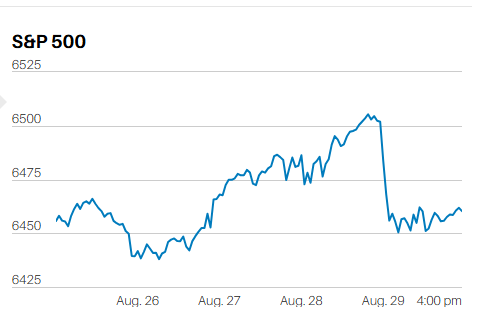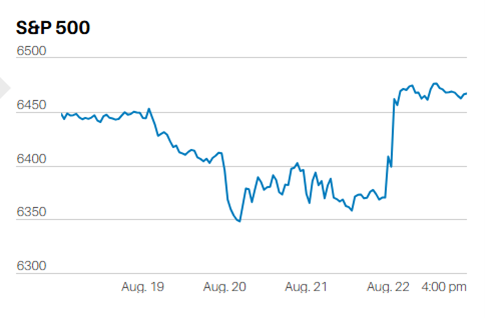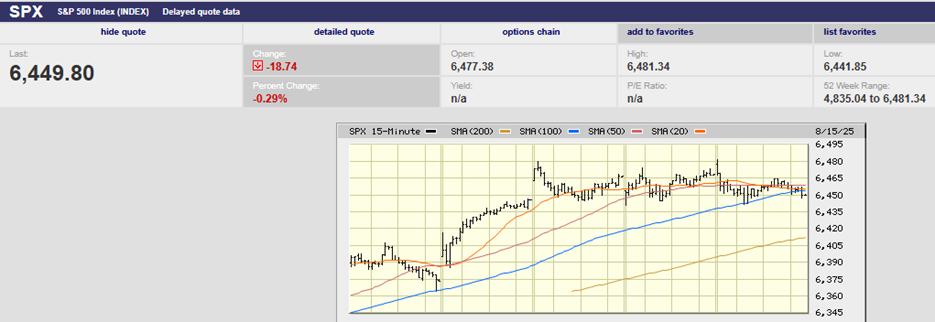Accepting the risk of a concentrated market

Market Update
The S&P 500 fell 1.9% to 4677.03 last week. The Nasdaq lost 4.5% as interest rates moved higher. The 10-Treasury rose to 1.76%. The 30-Treasury finished the week at 2.12%. November CPI was 6.8% year-over-year. The forecast for December exceeds 7%. Negative real rates exceed 5% measured by the 10-year Treasury. Norwood pointed out a few weeks ago that negative real rates of more than 5% are rare. We wrote in Vol. 154 that, “Credit hasn’t been this cheap since March of 1951. Real interest rates were negative during the second half of the 1940s and early 1950s. The U.S. allowed inflation to rise while suppressing interest rates.” We also wrote that borrowers are paid to borrow when real rates are negative. And so they do.
Norwood Economics agrees with Dr. Lacy Hunt that inflation will fall back in the short term. Norwood also thinks we’re at the start of an inflationary cycle similar to the late 1940’s and early 1950’s, and for the same reason. Sustained inflation is needed to reduce the real debt burden. The economy is not growing fast enough to do it on its own. Expect the Fed to talk and act tough for the next few quarters. The yield curve is likely to flatten, as it did in 2018 and 2019. The debt-laden economy is likely to slow faster than anticipated. The Fed is likely to start making dovish noises by late 2022/early 2023. The economy won’t have time to wring inflation out of the system before the next round of liquidity. Our base case is rising inflation over the next five to ten years. Not in a straight line of course, but the trend will be up for the foreseeable future.
Meanwhile, we also wrote a few weeks ago that, “negative real rates are a positive for stocks and commodities. However, U.S. large-cap stocks will underperform, especially high P/E stocks.” The reason they are likely to underperform is because they are trading at high multiples of earnings. Price dictates return over the long run, always. The other reason they are likely to underperform is because interest rates are rising, at least in the short term.
High P/E stocks underperformed last week as the Nasdaq fell 4.5%. The Nasdaq is home to many tech stocks and many expensive growth stocks. As of Thursday, 38% of Nasdaq stocks were down 50% or more from their 52-week highs, according to Barron’s. The Nasdaq is down only 5.7% because of big tech stocks like Apple and Microsoft. The five or six stocks that make up some 25% of the S&P 500 are those same stocks holding up the Nasdaq. The market will fall sharply if the Generals run into selling.
In the short term, the S&P 500 is resting on top of the 50-day, which is support. The 100-day sits around 4580 and the 200-day is at 4400. A pullback to the 200-day would be normal. The S&P 500 would need to drop 8.7% from its all-time high before reaching the 200-day. To many investors, it will feel cataclysmic if the index does fall almost 9%. Investors have gotten use to ever-rising markets. The S&P 500 hasn’t touched its 200-day moving average since late May 2020. It hasn’t had a pullback of 9% in a while either. The S&P 500 fell 8.3% in June of 2020. It fell 10.6% in September of 2020. Fifteen months and counting since the S&P has caught even a sniffle. Norwood expects more volatility in 2022. We will use it as a buying opportunity.
Economic Indicators
The ISM manufacturing index was 58.7% in December, down from 61.1%. Job openings were 10.6 million in November, down from 11.1 million the prior month. Job quits rose to 4.5 million from 4.2 million. Initial jobless claims were 207,000 last week, continuing the low claims numbers. Manufacturing and the job market remain strong.
The ISM services index was 67.6% in December down from 69.1%. Any reading over 60% is considered very strong. Nonfarm payrolls were only 199,000, well below the 422,000 expected. But average hourly earnings rose 0.6%, up from 0.3% the prior month. The unemployment rate also fell to 3.9% from 4.2% in November and 4.6% in October. A case can be made that the U.S. is running out of workers, that the low payroll number is a result of a tight labor market. Not an encouraging thought for those hoping inflation will start to subside soon.
A Concentrated Market Can Be Dangerous
“I want to keep up with the stock market,” a client tells me. “I don’t want to take too much risk,” they say in the next breath.
I hear variations of those two statements from clients, friends, and prospects frequently. The standard deviation of the S&P 500 is around 15%. It was 17.4% over the last three years, according to Morningstar. Standard deviation is the amount of variation in something. The long-run return for the S&P 500 is about 9.5%. A standard deviation of 15% means that two-thirds of the time the S&P 500 will return between -5.5% and 24.5%. The S&P 500 will return between -20.5% and 39.5% approximately 95% of the time. Volatility is risk in the investment world. Owning the S&P 500 means living with its volatility. Investors can't earn S&P 500 returns without accepting the risk.
Standard deviation can and does change for the S&P 500. It changes as the makeup of the S&P changes. Currently, the S&P 500 is highly concentrated. The market-cap weight of the top 50 stocks is the third-biggest ever, according to J.P. Morgan. The top 50 stocks account for 56% of the index. The S&P was more concentrated when the dot-com bubble peaked in 2000. The top 50 stocks made up 61% of the index. It was also more concentrated when the Nifty Fifty dominated in 1972-73. The top 50 stocks made up 65% of the index. Both times the S&P crashed and burned when the top 50 lost favor with investors. The most dangerous words in investing are, “This time is different”. We will find out in the coming years whether that is the case.
Regards,
Christopher R Norwood, CFA
Chief Market Strategist











